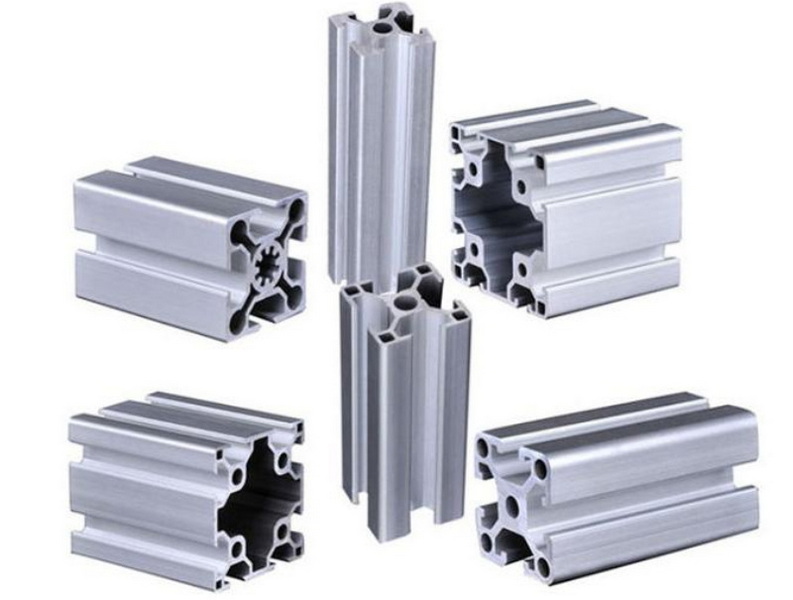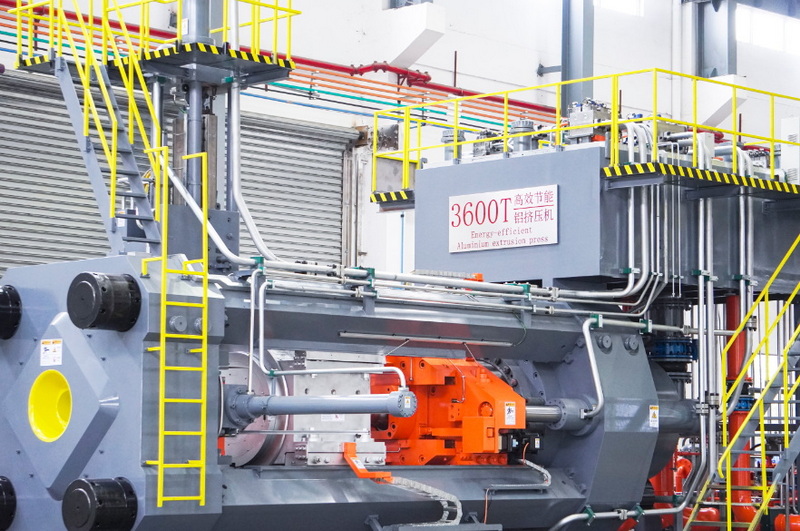Content Menu
● Understanding Aluminum Extrusion
● Common Causes of Poor Extrusion
● Troubleshooting Steps
● Preventive Measures
● The Role of Temperature, Pressure, and Precision
● Step-by-Step Guide to Aluminum Extrusion Process
● Common Defects in Aluminum Extrusion
● Conclusion
● FAQ
>> 1. What should I do if my aluminum extruder is overheating?
>> 2. How can I tell if my die is blocked?
>> 3. What types of aluminum alloys are best for extrusion?
>> 4. How often should I perform maintenance on my extruder?
>> 5. Can I use recycled aluminum for extrusion?
● Citations:
Aluminum extrusion is a widely used manufacturing process for shaping aluminum into desired profiles. However, issues can arise during the extrusion process, leading to problems such as under-extrusion or complete failure to extrude. Understanding the common causes of these issues and how to troubleshoot them is essential for anyone working with aluminum extruders. This article will explore various reasons why your aluminum extruder may not be extruding properly, along with solutions and preventive measures.

Understanding Aluminum Extrusion
Aluminum extrusion involves forcing heated aluminum through a die to create specific shapes. The process is highly efficient and allows for a wide range of applications, from construction materials to automotive parts. However, several factors can affect the extrusion quality and efficiency.
Common Causes of Poor Extrusion
1. Temperature Issues
The temperature of the aluminum material is critical in the extrusion process. If the aluminum is not heated to the correct temperature, it may become too viscous or solidify prematurely, leading to poor flow through the die.
- Solution: Ensure that the heating elements are functioning correctly and that the temperature settings are appropriate for the specific aluminum alloy being used.
2. Pressure Problems
Insufficient pressure can cause inadequate material flow, resulting in incomplete profiles or under-extrusion.
- Solution: Check the hydraulic system for any leaks or malfunctions. Adjust the pressure settings as needed to ensure optimal performance.
3. Die Blockage
A blockage in the die can prevent aluminum from flowing through properly, causing significant issues in extrusion.
- Solution: Regularly inspect and clean the die to remove any debris or buildup that could impede flow.
4. Material Quality
The quality of the aluminum alloy used can significantly impact extrusion performance. Impurities or inconsistencies in the material can lead to defects.
- Solution: Use high-quality aluminum alloys that meet industry standards and specifications.
5. Lubrication Issues
Proper lubrication is essential for reducing friction between moving parts in the extruder. Lack of lubrication can lead to increased wear and tear on components.
- Solution: Regularly check and replenish lubricants as needed, ensuring all moving parts are adequately lubricated.
6. Mechanical Failures
Components such as motors, bearings, and screws may fail due to wear or improper maintenance, leading to extrusion problems.
- Solution: Conduct routine maintenance checks on all mechanical components and replace any worn parts promptly.
7. Inadequate Feeding System
If the feeding system does not supply enough material to the extruder, it can result in interruptions during the extrusion process.
- Solution: Ensure that the hopper is adequately filled and that there are no blockages in the feeding mechanism.
8. Extrusion Speed
The speed at which aluminum is extruded can also affect quality. Too fast a speed may lead to defects, while too slow a speed can cause overheating.
- Solution: Adjust the extrusion speed according to the material properties and desired profile characteristics.
Troubleshooting Steps
When faced with an issue of your aluminum extruder not extruding properly, follow these troubleshooting steps:
- Inspect Temperature Settings: Verify that your temperature controls are set correctly for your specific alloy.
- Check Pressure Levels: Measure hydraulic pressure levels and adjust as necessary.
- Examine Die Condition: Look for signs of blockage or wear in the die.
- Assess Material Quality: Ensure you are using high-grade aluminum alloys.
- Lubrication Check: Confirm all moving parts are adequately lubricated.
- Mechanical Inspection: Look for any signs of wear or malfunction in motors and bearings.
- Feeding System Review: Make sure there are no blockages in the feeding system.
- Adjust Speed Settings: Fine-tune your extrusion speed based on observed results.

Preventive Measures
To avoid future problems with your aluminum extruder:
- Implement regular maintenance schedules for all equipment.
- Train staff on proper operating procedures and troubleshooting techniques.
- Keep detailed logs of production runs to identify trends or recurring issues.
- Invest in high-quality materials and components to reduce failure rates.
- Utilize advanced monitoring systems that provide real-time feedback on operational parameters.
The Role of Temperature, Pressure, and Precision
The extrusion process relies heavily on controlling temperature and pressure. The aluminum billet (a cylindrical piece of aluminum) is preheated to make it malleable; then a ram applies immense pressure—sometimes up to 15,000 tons—to force it through the die. This balance of heat and pressure ensures that the final product is strong, precise, and suited for its intended application[3].
Step-by-Step Guide to Aluminum Extrusion Process
Understanding each stage helps explain why this manufacturing technique is favored across so many industries:
1. Die Preparation
- Aluminum dies made from high-strength steel are machined to match product profiles.
2. Billet Preheating
- Billets are preheated in ovens to temperatures between 400-500°C for malleability.
3. Extrusion Process
- The heated billet is transferred to an extrusion press where immense pressure forces it through a die[3].
4. Quenching
- After exiting the die, profiles undergo rapid cooling (quenching) using water baths or air fans[3].
5. Shearing and Cooling
- Profiles are sheared to length using a hot saw before being cooled completely[3].
6. Stretching and Alignment
- To correct natural twisting or bending during cooling, profiles are mechanically pulled from both ends[3].
7. Cutting to Length
- Profiles are cut into specified lengths ready for further processing[3].
8. Secondary Operations
- Additional processes like surface finishing (anodizing or powder coating) enhance appearance and corrosion resistance[3].
Common Defects in Aluminum Extrusion
Defects can occur during aluminum extrusion due to various factors:
- Poor surface finish
- Lack of dimensions
- Weak physical structure
These defects often stem from non-uniform metal flow or improper process parameters[2]. Solutions include optimizing die design, controlling extrusion parameters like temperature and pressure, ensuring high-quality materials, regular equipment maintenance, and implementing real-time monitoring systems[2].
Conclusion
Understanding why your aluminum extruder is not extruding properly involves recognizing various mechanical, thermal, and material factors at play. By following systematic troubleshooting steps and implementing preventive measures, you can enhance your extrusion processes' efficiency and reliability. Regular maintenance and quality control are key components in ensuring consistent performance from your aluminum extruder.

FAQ
1. What should I do if my aluminum extruder is overheating?
Overheating can be caused by several factors including incorrect temperature settings or insufficient lubrication. Check your temperature controls and ensure all moving parts are well-lubricated.
2. How can I tell if my die is blocked?
Signs of blockage include uneven extrusion profiles or a complete stop in material flow. Inspect the die visually and clean it if necessary.
3. What types of aluminum alloys are best for extrusion?
High-quality alloys such as 6061 or 6063 are commonly used due to their excellent workability and strength properties.
4. How often should I perform maintenance on my extruder?
Regular maintenance should be performed at least once a month, but more frequent checks may be necessary depending on usage intensity.
5. Can I use recycled aluminum for extrusion?
Yes, recycled aluminum can be used for extrusion; however, it must meet specific quality standards to ensure proper performance during processing.
Citations:
[1] https://www.otalum.com/common-faults-and-solutions-in-the-work-of-aluminum-extruder.html
[2] https://hplmachining.com/blog/what-are-the-problems-with-aluminum-extrusion/
[3] https://hitopindustrial.com/aluminum-extrusion-process/
[4] https://www.machine4aluminium.com/how-to-optimize-aluminum-extrusion-and-heat-treatment-processes/
[5] https://satimaco.wixsite.com/satimaco/post/aluminum-extrusion-machine-maintenance-tips-for-peak-performance
[6] https://www.alexandriaindustries.com/content-library/demand-innovation/aluminum-extrusion-increases-options-optimize-supply-chain/
[7] https://dunawayinc.com/9-essential-maintenance-tips-to-maximize-the-life-of-your-hydraulic-extrusion-press/
[8] https://www.researchgate.net/profile/Abul-Fazal-Arif/publication/281905425_PRODUCT_DEFECTS_IN_ALUMINUM_EXTRUSION_AND_ITS_IMPACT_ON_OPERATIONAL_COST/links/55fdc16908ae07629e2f1a1f/PRODUCT-DEFECTS-IN-ALUMINUM-EXTRUSION-AND-ITS-IMPACT-ON-OPERATIONAL-COST.pdf
[9] https://extal.com/en/the-evolution-of-aluminum-extrusion-techniques-with-extal/
[10] https://www.elastron.com/en/12-extrusion-defects-and-troubleshooting-elastron-tpe
[11] https://www.guangyaaluminium.com/several-common-aluminum-profile-extrusion-die-problems-and-repair-methods_n150
[12] https://www.psiextrusions.com/blog/innovations-in-aluminum-extrusion-sustainability-and-ai/
[13] https://www.atieuno.com
[14] https://www.linkedin.com/pulse/nine-main-points-aluminum-extrusion-press-machine-maintenance-
[15] https://www.hugh-aluminum.com/common-problems-and-solutions-of-aluminum-extrusion/
[16] https://www.nomexfelt.com/list-news/3-major-defects-often-occur-in-the-extrusion-process-of-aluminum-profiles-how-did-you-solve-it/
[17] https://www.shengxinaluminium.com/mastering-the-aluminum-extrusion-process-a-step-by-step-guide_n238
[18] https://www.researchgate.net/publication/257336242_Optimization_of_an_aluminum_profile_extrusion_process_based_on_Taguchi's_method_with_SN_analysis
[19] https://www.outashi.com/blog/tips-maintenance-aluminum-extrusion-press-id25.html
[20] https://www.reddit.com/r/ender3/comments/11wvrt1/under_extrusion_issues_updated_aluminum_extruder/






















